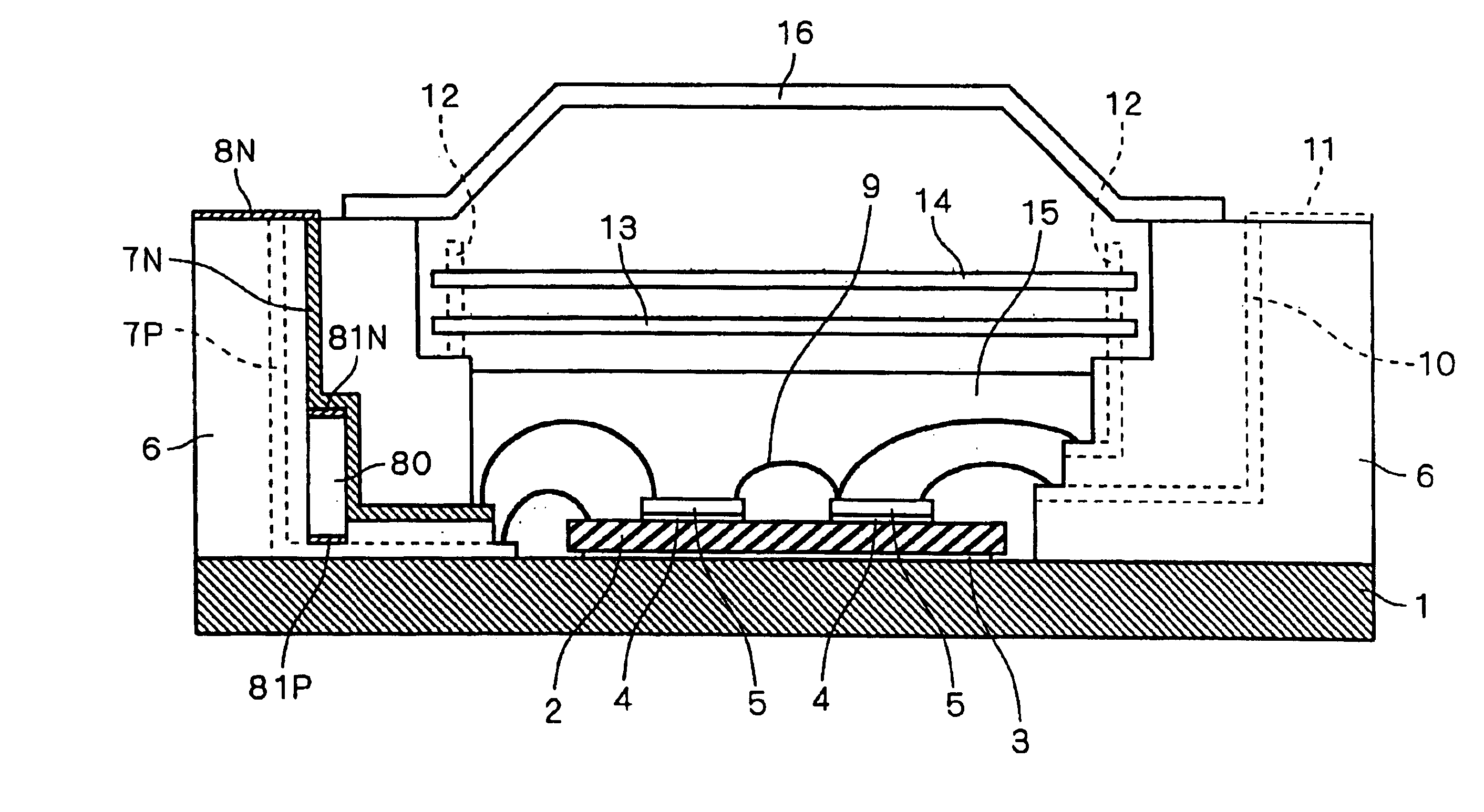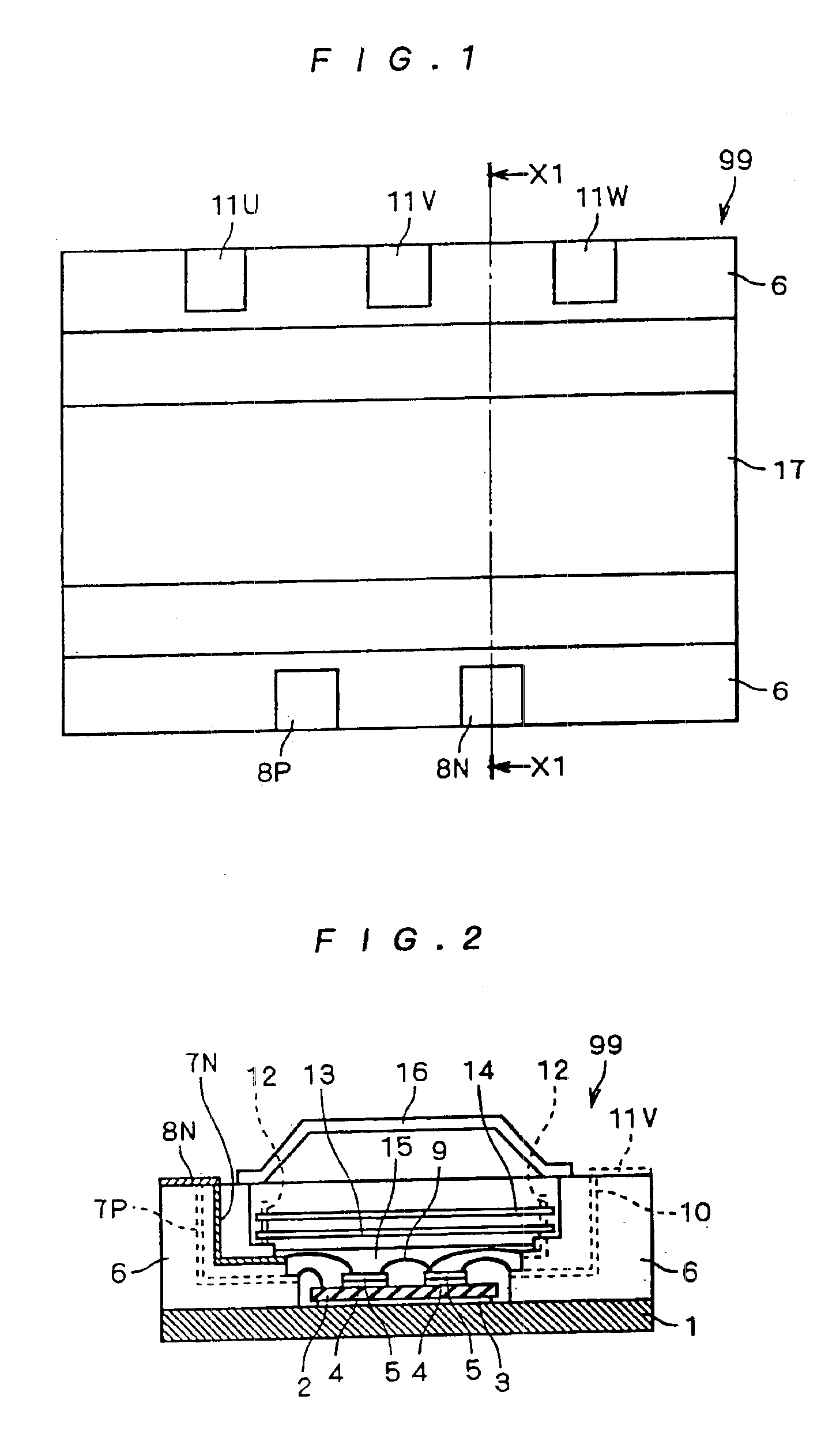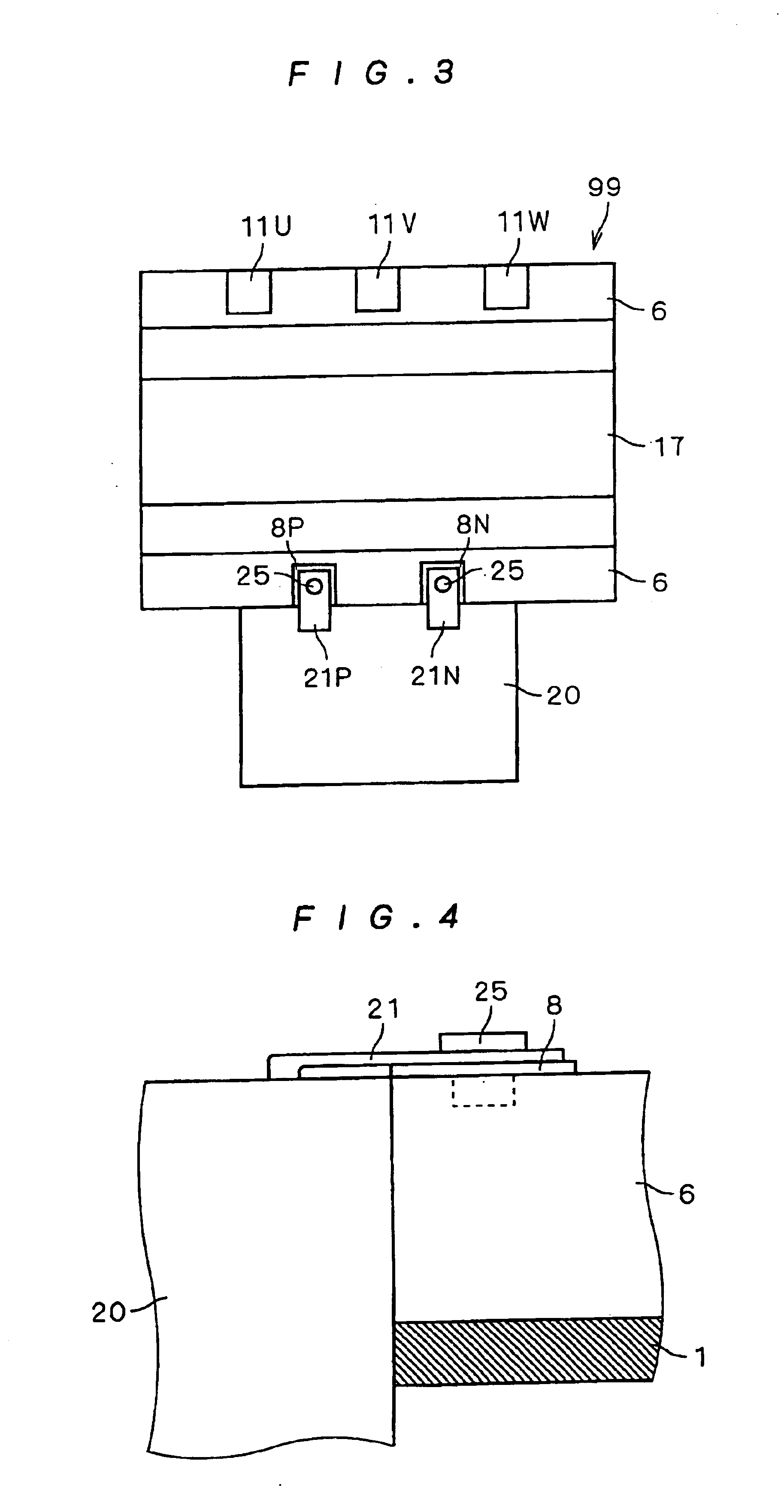Power module
a power module and power module technology, applied in the direction of basic electric elements, electrical apparatus contruction details, printed circuit non-printed electric components association, etc., can solve the problems of increasing circuit inductance, large number of parts, complicated assembly, etc., to reduce circuit inductance, shorten the wiring path, and enhance the reliability of the power module
- Summary
- Abstract
- Description
- Claims
- Application Information
AI Technical Summary
Benefits of technology
Problems solved by technology
Method used
Image
Examples
first preferred embodiment
[0078]FIG. 1 is a top plan view schematically showing a structure of a power module body portion 99 according to a first preferred embodiment of the present invention. Output terminals 11U, 11V and 11W corresponding to three U-, V- and W-phases respectively are arranged along a first side of a top surface of a case frame 6. An N-terminal 8N and a P-terminal 8P are arranged along a second side of the top surface of the case frame 6 which is parallel to the first side.
[0079]FIG. 2 is a cross-sectional view showing a cross-sectional structure taken along the line X1—X1 of FIG. 1. The case frame 6 made of resin is disposed on a metal base plate 1 functioning as a heat sink, and a case lid 16 made of resin is disposed on the case frame 6. An insulating substrate 2 made of ceramic is soldered, as shown at 3, onto the base plate 1. A plurality of power semiconductor devices 5 such as IGBTs are mounted on the insulating substrate 2 with solder 4. Circuit elements (not shown) such as switchi...
second preferred embodiment
[0091]FIG. 7 is a top plan view schematically showing the overall construction of the power module according to a second preferred embodiment of the present invention. FIGS. 8 and 9 are cross-sectional views showing cross-sectional structures taken along the lines X2—X2 and X3—X3 of FIG. 7, respectively. With reference to FIG. 7, a plurality of capacitor elements 30a to 30e are arranged in a smoothing capacitor enclosure 32. Referring to FIG. 8, the capacitor elements 30a to 30e have N-electrodes 35a to 35e at their bottom surfaces, respectively. The N-electrodes 35a to 35e are commonly in contact with the plate-shaped N-electrode 21N. Part of the N-electrode 21N extends to a top surface of the enclosure 32 and is fastened by the screw 25 to the N-terminal 8N of the power module body portion 99.
[0092]Referring to FIG. 9, the capacitor elements 30a to 30e have P-electrodes 36a to 36e at their top surfaces, respectively. The P-electrodes 36a to 36e are commonly in contact with the pla...
third preferred embodiment
[0098]FIG. 11 is a top plan view schematically showing the overall construction of the power module according to a third preferred embodiment of the present invention. FIG. 12 is a cross-sectional view showing a cross-sectional structure taken along the line X4—X4 of FIG. 11. An outer surface of the case frame 6 includes a partial recess having a pair of opposed side surfaces. The N-terminal 8N is disposed on a first one of the side surfaces of the recess, and the P-terminal 8P is disposed on a second one thereof. As shown in FIG. 12, the N-terminal 8N and the P-terminal 8P extend to parts of the top surface of the case frame 6 which surround the recess.
[0099]A smoothing capacitor 40 is shaped to fit in the recess, and has an N-electrode 43N on its first side surface opposed to the first side surface of the recess and a P-electrode 43P on its second side surface opposed to the second side surface of the recess. The smoothing capacitor 40 is fitted in the recess, and solder 41 bonds ...
PUM
 Login to View More
Login to View More Abstract
Description
Claims
Application Information
 Login to View More
Login to View More - R&D
- Intellectual Property
- Life Sciences
- Materials
- Tech Scout
- Unparalleled Data Quality
- Higher Quality Content
- 60% Fewer Hallucinations
Browse by: Latest US Patents, China's latest patents, Technical Efficacy Thesaurus, Application Domain, Technology Topic, Popular Technical Reports.
© 2025 PatSnap. All rights reserved.Legal|Privacy policy|Modern Slavery Act Transparency Statement|Sitemap|About US| Contact US: help@patsnap.com



